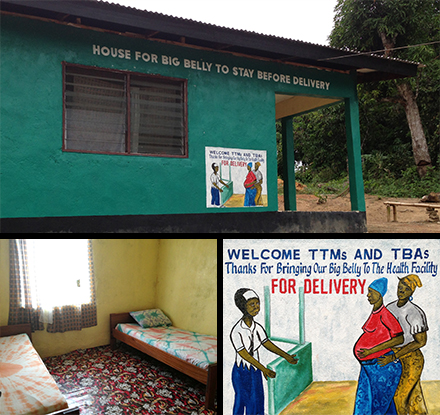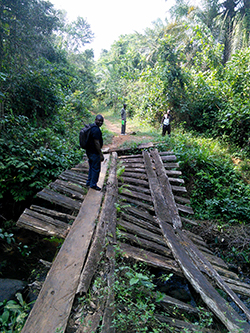Jody Lori, Associate Professor and Associate Dean for Global Affairs in the School of Nursing, helped establish Liberia’s first-ever maternity waiting homes through a USAID project in 2010. But the region’s Ebola virus outbreak in 2014-15 curtailed those efforts. Now, thanks to a $400,000 grant from the Bill and Melinda Gates Foundation, Lori headed back to follow up not only the initial five facilities she helped establish, but a dozen or so others that have sprung up independently across Liberia.

“We were just beginning to demonstrate that we were making a difference when Ebola cut the project short,” said Lori, PhD. “Now that crisis is passed and a number of new facilities have opened up. It’s a good time to go back and evaluate how they are doing.”
Maternity waiting homes are designated live-in facilities close to established health clinics. Women are encouraged to spend the final days of their pregnancy there rather than remaining at home until labor begins and risk not being able to get to a clinic at all. As of 2013, nearly half of births in Liberia were still taking place outside of medical facilities. Changing that trend is key to lowering the country’s maternal and neonatal mortality rates.
“These are remote communities deep in the rain forest, with paths to walk but often no roads. It could be a whole day’s walk to the clinic,” Lori said. “That’s a difficult journey for anyone, let alone a woman in labor.”
The first five maternity waiting homes established under her initial project were small, three-room facilities set up to accommodate two mothers per room if needed – or, more often, a mother and the traditional birth attendant from her village. Lori, who has also done extensive work with maternity waiting homes in Zambia, understood that involving local traditional birth attendants in the process was a key to success. But it’s unclear whether that model – or any of the best-practices from the initial five facilities – remain in place, or whether they have been replicated in the newer facilities.

“It’s kind of a natural experiment. These new facilities have gone up and there are a lot of questions,” said Lori. “When these facilities were planned, did they go in first and mobilize the communities? Did they get buy-in? How are they being supported financially? How are they being utilized and by whom?”
Her partner on the project is Assistant Professor of OB-GYN and Learning Health Sciences Cheryl Moyer, PhD, who has worked extensively on maternal health issues in Ghana. Their one-year Gates grant will fund multiple visits to Liberia between the partners (Lori is traveling there this month), as well as a small team of research assistants and a program manager in the country for day-to-day guidance.
“I believe maternity waiting homes can make a big impact, but they need to be properly planned and implemented,” Lori said. “My theory is you can’t just go in, build a building, and expect mothers to start showing up. Contrasting different facilities that have had time to independently grow and mature will tell us a lot about what works and what doesn’t.”
